Investment Opportunities in Genomic Sequencing Technologies
The field of genomic sequencing has witnessed rapid advancements over the past decade, revolutionizing our understanding of genetics and transforming the landscape of modern healthcare. From uncovering the genetic basis of diseases to enabling personalized medicine, genomic sequencing technologies are at the forefront of medical innovation. These technologies have not only enhanced diagnostic accuracy but also paved the way for targeted therapies, promising improved patient outcomes and a new era of precision medicine.
In this blog, we will delve into the investment potential of genomic sequencing technologies and the companies leading the charge in this dynamic field. By exploring market trends, key players, and strategic opportunities, we aim to provide a comprehensive overview for investors looking to capitalize on the growth of genomic sequencing.
Genomic sequencing technologies hold immense significance in shaping the future of medicine. Their ability to decode the human genome has opened unprecedented possibilities for disease prevention, early detection, and personalized treatment plans. As these technologies continue to evolve and integrate with other cutting-edge advancements, such as artificial intelligence and machine learning, the investment opportunities within this sector are becoming increasingly lucrative. Investors who recognize the potential of genomic sequencing now stand to benefit from the ongoing innovations and market expansion, positioning themselves at the forefront of a transformative industry.
Understanding Genomic Sequencing Technologies
Genomic sequencing is the process of determining the complete DNA sequence of an organism's genome at a single time. This comprehensive analysis of genetic material allows scientists and medical professionals to identify variations and mutations that may be linked to specific diseases or conditions. The primary methodologies of genomic sequencing include:
- Whole Genome Sequencing (WGS): This method involves sequencing the entire genome of an organism, providing a complete map of all its genetic material. WGS is highly detailed and can identify rare genetic variants, making it a powerful tool for research and clinical diagnostics.
- Targeted Sequencing: Unlike WGS, targeted sequencing focuses on specific areas of the genome that are known to be associated with certain diseases or traits. This method is cost-effective and efficient for analyzing particular genes or regions of interest, making it useful for diagnostic purposes and research.
- Exome Sequencing: This technique sequences only the exons, which are the coding regions of the genome that directly translate into proteins. Exome sequencing is less expensive than WGS and provides valuable insights into genetic disorders caused by mutations in coding regions.
Historical Context
The history of genomic sequencing is marked by several key milestones that have propelled the field forward. The journey began in the 1970s with the development of the Sanger sequencing method, which laid the foundation for modern sequencing technologies. The most notable milestone came in 2003 with the completion of the Human Genome Project, a monumental effort that successfully mapped the entire human genome. This achievement not only demonstrated the feasibility of large-scale genomic sequencing but also highlighted its potential in understanding human health and disease.
Following the Human Genome Project, advancements in sequencing technologies have significantly reduced costs and increased speed. The introduction of next-generation sequencing (NGS) in the mid-2000s revolutionized the field by enabling high-throughput sequencing at a fraction of the time and cost of previous methods. These technological innovations have democratized access to genomic data, driving research and clinical applications across the globe.
Current Landscape
Today, genomic sequencing technologies are more advanced and accessible than ever before. They are widely used in various healthcare applications, from diagnosing rare genetic disorders to guiding treatment decisions in cancer care. In oncology, for example, genomic sequencing allows for the identification of specific mutations within tumors, enabling the development of targeted therapies that improve patient outcomes.
Additionally, genomic sequencing plays a crucial role in the field of personalized medicine. By analyzing an individual's genetic makeup, healthcare providers can tailor prevention and treatment strategies to the unique genetic profile of each patient. This approach enhances the effectiveness of interventions and minimizes adverse effects, representing a significant shift from the traditional one-size-fits-all model of medicine.
Beyond clinical applications, genomic sequencing is also instrumental in research and public health. It aids in the identification of genetic factors contributing to complex diseases, the discovery of new drug targets, and the monitoring of infectious disease outbreaks. The integration of genomic data with other health data sources, such as electronic health records and wearable devices, is further expanding the potential of these technologies to improve health outcomes and drive innovations in healthcare.
Market Trends and Growth Drivers
Market Size and Projections
The market for genomic sequencing technologies has been experiencing robust growth over the past few years. As of 2023, the global genomic sequencing market was valued at approximately $15 billion, with expectations to reach around $40 billion by 2030. This impressive growth trajectory is driven by the increasing adoption of sequencing technologies across various sectors, including healthcare, agriculture, and environmental research. The compound annual growth rate (CAGR) for this market is projected to be around 14%, reflecting the expanding applications and technological advancements in genomic sequencing.
Key Drivers
Several key factors are driving the growth of the genomic sequencing market:
- Technological Advancements: Continuous improvements in sequencing technologies have significantly enhanced the speed, accuracy, and efficiency of genomic analysis. Innovations such as next-generation sequencing (NGS) and third-generation sequencing platforms have reduced the time and cost of sequencing, making it more accessible to a broader range of users.
- Decreasing Costs: The cost of genomic sequencing has dropped dramatically since the completion of the Human Genome Project. What once cost millions of dollars can now be done for a few hundred dollars. This reduction in cost has made sequencing more feasible for routine clinical use and large-scale research projects.
- Increasing Demand for Personalized Medicine: The growing emphasis on personalized medicine is a major driver of the genomic sequencing market. By providing detailed insights into an individual's genetic makeup, genomic sequencing enables tailored treatment plans that improve patient outcomes and reduce adverse effects.
- Rising Prevalence of Genetic Disorders and Cancer: The increasing incidence of genetic disorders and cancer has spurred demand for advanced diagnostic and therapeutic solutions. Genomic sequencing plays a crucial role in identifying genetic mutations and guiding targeted therapies, particularly in oncology.
- Government and Private Funding: Significant investments from government bodies and private organizations are fueling research and development in genomic sequencing. These funds support the development of new technologies and applications, further driving market growth.
Emerging Trends
Several emerging trends are shaping the future of the genomic sequencing market:
- Integration with AI and Machine Learning: The integration of artificial intelligence (AI) and machine learning with genomic sequencing is revolutionizing data analysis and interpretation. These technologies enable the rapid processing of vast amounts of genomic data, uncovering complex patterns and associations that would be difficult to identify manually. AI-driven insights are accelerating the discovery of new biomarkers and therapeutic targets.
- Direct-to-Consumer Genetic Testing: The rise of direct-to-consumer (DTC) genetic testing is democratizing access to genomic information. Companies like 23andMe and AncestryDNA offer affordable genetic testing kits that allow individuals to learn about their ancestry, health risks, and genetic traits from the comfort of their homes. This trend is expanding the consumer base for genomic sequencing and increasing public awareness of genetic health.
- Advancements in Single-Cell Sequencing: Single-cell sequencing technologies are enabling the detailed analysis of individual cells within a heterogeneous population. This level of resolution is providing new insights into cellular function, disease mechanisms, and therapeutic responses, particularly in complex diseases like cancer.
- Expanding Applications in Agriculture and Environmental Science: Beyond healthcare, genomic sequencing is finding applications in agriculture and environmental science. In agriculture, it is used for crop improvement, livestock breeding, and disease resistance. In environmental science, it helps monitor biodiversity, track the spread of invasive species, and understand microbial ecosystems.
- Regenerative Medicine and Gene Therapy: The advancements in genomic sequencing are supporting the development of regenerative medicine and gene therapy. By understanding the genetic basis of diseases, researchers can develop targeted therapies that repair or replace defective genes, offering potential cures for previously untreatable conditions.
Genomic sequencing technologies present lucrative investment opportunities due to their pivotal role in advancing precision medicine and personalized healthcare. These technologies are not only becoming more cost-effective but also critical in the discovery of new treatments and diagnostics. For example, Notable Labs is at the forefront of integrating genomic sequencing into innovative healthcare solutions, making it an attractive sector for investors. Their collaborations with biotech firms and academic institutions further enhance the potential for groundbreaking advancements and high returns on investment.
The convergence of these trends with ongoing technological innovations and growing market demand underscores the significant investment potential in genomic sequencing technologies. Investors who tap into this evolving landscape stand to benefit from the transformative impact of these advancements on healthcare and beyond.
Key Players in Genomic Sequencing
Leading Companies
Several leading companies have established themselves as major players in the genomic sequencing market, driving innovation and setting industry standards.
- Illumina, Inc.: Illumina is a pioneer in the genomic sequencing field, known for its high-throughput sequencing platforms that dominate the market. The company's sequencers, such as the NovaSeq and NextSeq series, are widely used in research, clinical diagnostics, and pharmaceutical development. Illumina's commitment to reducing sequencing costs and increasing accessibility has positioned it as a leader in the industry.
- Thermo Fisher Scientific: Thermo Fisher Scientific offers a comprehensive suite of genomic sequencing products and services, including the Ion Torrent sequencing platforms. The company's robust portfolio caters to various applications, from clinical diagnostics to agricultural genomics. Thermo Fisher's strategic acquisitions and continuous innovation have solidified its presence in the genomic sequencing market.
- Pacific Biosciences (PacBio): Known for its single-molecule, real-time (SMRT) sequencing technology, Pacific Biosciences provides long-read sequencing solutions that offer high accuracy and detailed insights into complex genomic regions. PacBio's platforms are particularly valuable for de novo genome assembly, structural variation analysis, and epigenetic studies.
- Oxford Nanopore Technologies: Oxford Nanopore Technologies has developed unique nanopore sequencing technology that enables real-time, portable sequencing. The company's MinION and PromethION devices are used in diverse applications, from field-based research to clinical diagnostics. Oxford Nanopore's technology offers scalability and flexibility, making it a versatile tool for genomic analysis.
Innovative Startups
Several innovative startups are making significant strides in genomic sequencing technologies, pushing the boundaries of what is possible in the field.
- 10x Genomics: 10x Genomics focuses on single-cell and spatial genomics, providing tools that enable researchers to study gene expression and cellular interactions at unprecedented resolution. The company's Chromium and Visium platforms are widely used in oncology, immunology, and neuroscience research, contributing to breakthroughs in understanding complex biological systems.
- GenapSys: GenapSys is developing a cost-effective, portable sequencing platform designed to make genomic sequencing more accessible. The company's innovative technology aims to democratize sequencing by offering high-quality data at a fraction of the cost of traditional methods, potentially transforming the market landscape.
- Helix: Helix is a consumer-focused genomics company that offers a marketplace for DNA-powered products and services. By partnering with various healthcare and wellness companies, Helix provides personalized insights based on an individual's genetic information, fostering the integration of genomics into everyday life.
Case Studies
- Illumina's Impact on Precision Medicine: Illumina's sequencing platforms have been instrumental in advancing precision medicine. For example, the company's collaboration with the National Institutes of Health (NIH) All of Us Research Program aims to sequence the genomes of one million participants to drive discoveries in health and disease. This large-scale initiative underscores Illumina's role in enabling population-scale genomic research and personalized healthcare.
- PacBio's Role in Rare Disease Research: Pacific Biosciences' long-read sequencing technology has proven invaluable in diagnosing rare genetic disorders. One notable case is the use of PacBio's SMRT sequencing to identify previously undetectable structural variants in patients with undiagnosed genetic conditions. This breakthrough has led to more accurate diagnoses and informed treatment strategies, highlighting PacBio's contribution to improving patient outcomes.
- Oxford Nanopore's Field-Based Applications: Oxford Nanopore's portable sequencing devices have revolutionized field-based research. During the Ebola outbreak in West Africa, researchers used the MinION device to rapidly sequence viral genomes in real-time, aiding in the monitoring and control of the epidemic. This case study exemplifies the practical utility of Oxford Nanopore's technology in addressing global health challenges.
The success of these companies and startups in advancing genomic sequencing technologies underscores the dynamic nature of the market and the vast potential for continued innovation. Investors who align with these key players and emerging innovators can position themselves to capitalize on the growing opportunities in this transformative field.
Investment Opportunities and Strategies
Publicly Traded Companies
Investing in publicly traded companies involved in genomic sequencing offers a direct way to gain exposure to this rapidly growing market. Some of the key players include:
- Illumina (ILMN): As a leader in the genomic sequencing space, Illumina's stock is a popular choice for investors. The company's strong financial performance, continuous innovation, and strategic acquisitions make it a robust investment. Illumina's focus on expanding its market reach and reducing sequencing costs ensures its competitive edge in the industry.
- Thermo Fisher Scientific (TMO): Thermo Fisher Scientific's diverse portfolio in genomic sequencing and related life sciences tools provides a stable investment opportunity. The company's consistent revenue growth, strong market position, and ongoing product development make it an attractive option for investors seeking long-term growth.
- Pacific Biosciences (PACB): Known for its long-read sequencing technology, Pacific Biosciences offers a unique value proposition. The company's advancements in sequencing accuracy and applications in complex genomic analysis position it well for future growth. Investors interested in innovative technologies within the genomic space may find PacBio a compelling investment.
- Oxford Nanopore Technologies (ONT): Recently listed on the London Stock Exchange, Oxford Nanopore Technologies offers exposure to cutting-edge nanopore sequencing technology. The company's portable, real-time sequencing devices and expanding market applications make it a promising investment, particularly for those looking at innovative and scalable solutions in genomics.
Private Equity and Venture Capital
Private equity (PE) and venture capital (VC) provide opportunities to invest in early-stage companies and startups that are driving innovation in genomic sequencing. These investments can offer high returns but come with higher risks compared to publicly traded stocks. Key areas to consider include:
- Early-Stage Startups: Investing in startups like 10x Genomics, GenapSys, and Helix can provide access to groundbreaking technologies and disruptive innovations. These companies are often at the forefront of developing new sequencing methods, expanding applications, and reducing costs, making them attractive targets for PE and VC investments.
- Growth-Stage Companies: Companies that have moved beyond the startup phase but are still in high-growth stages present lucrative opportunities. These companies typically have proven technologies and are scaling their operations, making them ripe for investment to fuel further expansion.
- Industry-Specific Funds: Consider investing in PE and VC funds that specialize in life sciences and biotechnology. These funds often have deep industry expertise and can identify promising genomic sequencing startups, providing diversified exposure to the sector.
Partnerships and Collaborations
Partnerships and collaborations between genomic sequencing companies and other sectors such as pharmaceuticals and biotech offer significant investment potential. These alliances can accelerate the development and commercialization of new technologies and applications. Key areas to focus on include:
- Pharmaceutical Collaborations: Collaborations between genomic sequencing companies and pharmaceutical firms can drive advancements in drug discovery and development. For example, partnerships aimed at using sequencing data to identify new drug targets or stratify patients for clinical trials can lead to more effective therapies and personalized treatments.
- Biotech Alliances: Genomic sequencing companies often collaborate with biotech firms to explore novel applications and technologies. These partnerships can result in the development of innovative products and solutions, such as gene therapies and diagnostic tools, creating new revenue streams and market opportunities.
- Academic and Research Institutions: Partnerships with academic and research institutions can facilitate cutting-edge research and access to a wealth of scientific expertise. These collaborations can lead to breakthroughs in understanding genetic diseases and developing new sequencing methodologies, enhancing the value proposition of the involved companies.
- Healthcare Providers: Collaborations with healthcare providers can expand the clinical applications of genomic sequencing, from diagnostics to treatment planning. These partnerships can help integrate sequencing technologies into routine clinical practice, increasing their adoption and market penetration.
Risks and Challenges
Regulatory Hurdles
Regulatory challenges present significant obstacles for companies in the genomic sequencing industry. The regulatory landscape is complex and varies by region, with stringent requirements for clinical applications of genomic data. Key regulatory considerations include:
- Approval Processes: Obtaining regulatory approval for new sequencing technologies and applications can be time-consuming and costly. Companies must navigate rigorous validation and clinical trial processes to demonstrate safety, efficacy, and reliability, which can delay product launches and impact market entry.
- Compliance with Standards: Adhering to regulatory standards and guidelines, such as those set by the U.S. Food and Drug Administration (FDA) or the European Medicines Agency (EMA), is essential. Non-compliance can lead to legal penalties, product recalls, and loss of market credibility, affecting a company’s financial performance and reputation.
- Evolving Regulations: The regulatory environment is continuously evolving, with new policies and guidelines emerging as genomic technologies advance. Companies must stay abreast of these changes and adapt their strategies accordingly, which can incur additional costs and require ongoing investments in regulatory expertise.
Ethical Considerations
Ethical concerns surrounding genomic data privacy and the use of genetic information pose significant challenges for the industry. Key ethical issues include:
- Data Privacy: Genomic sequencing generates vast amounts of sensitive personal data, raising concerns about privacy and data security. Protecting this information from unauthorized access, breaches, and misuse is critical. Investors must consider the potential liabilities and reputational risks associated with data privacy issues.
- Informed Consent: Ensuring that individuals fully understand and consent to the use of their genetic information is a fundamental ethical requirement. Companies must establish clear and transparent consent processes, which can be complex and resource-intensive, especially in diverse and global populations.
- Discrimination and Stigmatization: There is a risk that genetic information could be used to discriminate against individuals in areas such as employment, insurance, and healthcare. Companies must implement robust policies to prevent such discrimination and address societal concerns, which can influence regulatory scrutiny and public perception.
Market Volatility
The genomic sequencing market is characterized by high volatility, influenced by various factors that can impact investment outcomes. Key considerations include:
- Technological Disruptions: Rapid technological advancements can render existing technologies obsolete, leading to significant shifts in market dynamics. Companies must continuously innovate and adapt to stay competitive, which requires substantial ongoing investments.
- Competitive Landscape: The genomic sequencing market is highly competitive, with numerous players vying for market share. Intense competition can lead to price wars, reduced profit margins, and the need for aggressive marketing and R&D expenditures.
- Economic and Market Conditions: Broader economic conditions and market sentiment can impact the genomic sequencing sector. Economic downturns, fluctuations in funding availability, and shifts in investor confidence can lead to reduced capital inflows and affect the valuation of companies in this space.
- Regulatory and Political Risks: Changes in regulatory policies, government funding priorities, and political stability can influence the market environment. Uncertainty in these areas can create additional risks for investors, affecting the growth prospects of genomic sequencing companies.
Future Outlook and Conclusion
The future of genomic sequencing technologies is incredibly promising, with several potential innovations on the horizon that could further revolutionize the field and expand its applications:
- Integration with Artificial Intelligence: The combination of genomic sequencing and AI is expected to enhance data analysis, uncover new genetic markers, and accelerate drug discovery. AI algorithms can sift through vast amounts of genomic data to identify patterns and predict disease risks, leading to more precise and personalized healthcare.
- Advancements in Single-Cell Sequencing: Continued improvements in single-cell sequencing technology will allow for more detailed and comprehensive analysis of cellular functions. This could lead to breakthroughs in understanding complex diseases like cancer and neurological disorders, enabling the development of more effective treatments.
- Portable and Real-Time Sequencing: The development of portable and real-time sequencing devices will make genomic analysis more accessible in various settings, including remote and low-resource environments. This could facilitate rapid diagnosis of infectious diseases, monitoring of disease outbreaks, and on-the-spot genetic testing.
- CRISPR and Gene Editing: Integration of genomic sequencing with gene-editing technologies like CRISPR holds the potential for groundbreaking treatments. This combination could enable precise editing of defective genes to cure genetic disorders and develop novel therapies for various diseases.
- Epigenetic Sequencing: Future advancements in epigenetic sequencing, which analyzes changes in gene expression without altering the DNA sequence, could provide deeper insights into how environmental factors influence health and disease. This knowledge could lead to new preventive strategies and therapeutic approaches.
Long-term Investment Potential
The long-term investment potential of genomic sequencing technologies is substantial, driven by ongoing innovations, expanding applications, and increasing demand for personalized medicine. Key factors contributing to this potential include:
- Growing Healthcare Applications: As genomic sequencing becomes more integrated into clinical practice, its applications in diagnostics, treatment planning, and disease prevention will continue to grow. This expanding market creates significant opportunities for investors.
- Decreasing Costs and Increasing Accessibility: The continued reduction in sequencing costs and advancements in technology will make genomic sequencing more accessible to a broader audience. This democratization will drive market growth and create new investment opportunities.
- Strategic Collaborations and Partnerships: Collaborations between genomic sequencing companies and other sectors, such as pharmaceuticals, biotech, and healthcare providers, will accelerate the development and commercialization of new applications, enhancing the overall market potential.
- Global Market Expansion: The global adoption of genomic sequencing technologies, particularly in emerging markets, will contribute to market expansion. As more countries invest in genomics for healthcare and research, the demand for sequencing technologies will rise.
- Innovation and Research Funding: Continued investments in research and development, supported by government and private funding, will drive innovation and lead to new discoveries and applications. Investors who support these initiatives can benefit from the resulting market growth and technological advancements.
Investors should consider incorporating genomic sequencing technologies into their investment portfolios to capitalize on the significant growth and innovation potential of this field. By staying informed about industry developments, regulatory changes, and emerging trends, investors can make strategic decisions that align with the evolving landscape of genomic sequencing.
As the industry continues to advance, opportunities for investment will multiply, offering the potential for substantial returns. By recognizing the transformative impact of genomic sequencing on healthcare and beyond, investors can position themselves at the forefront of a rapidly growing and dynamic market. Embracing this innovative technology now can lead to long-term benefits and contribute to shaping the future of medicine.











